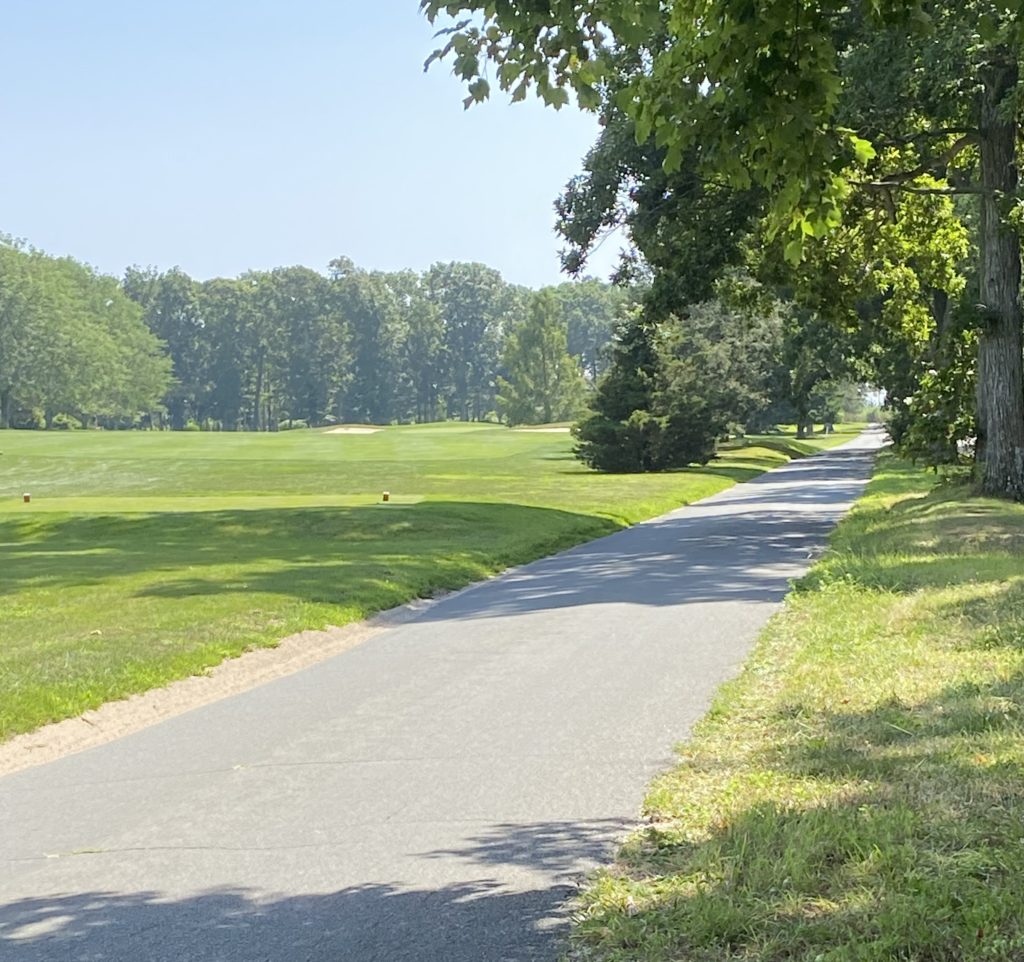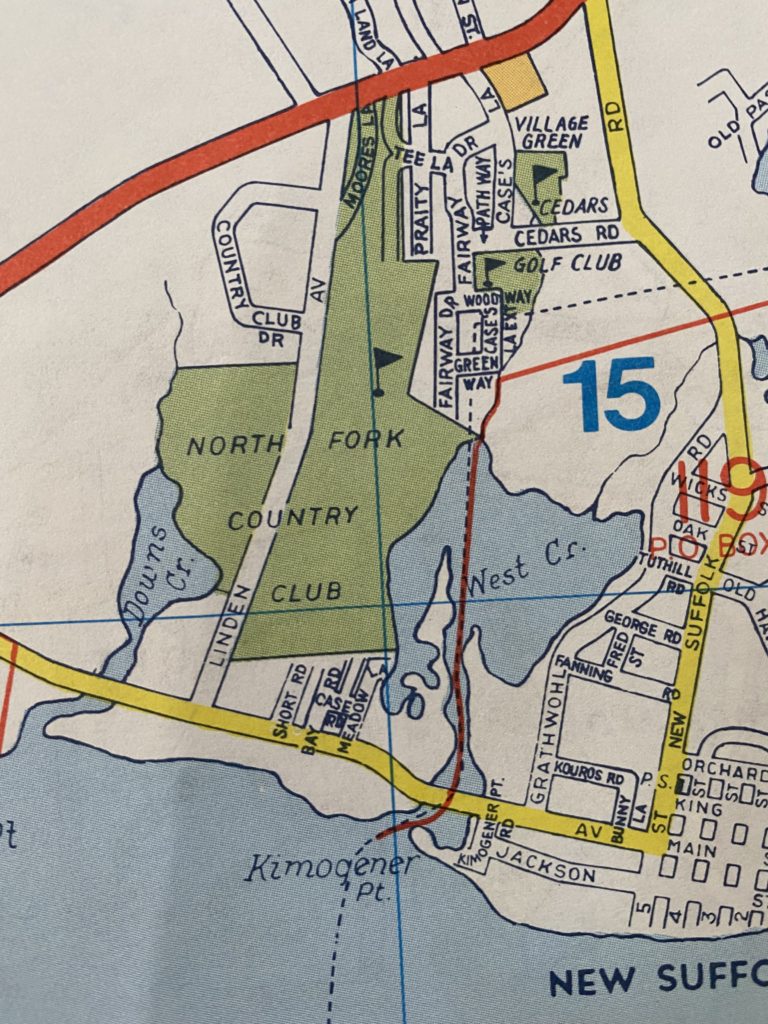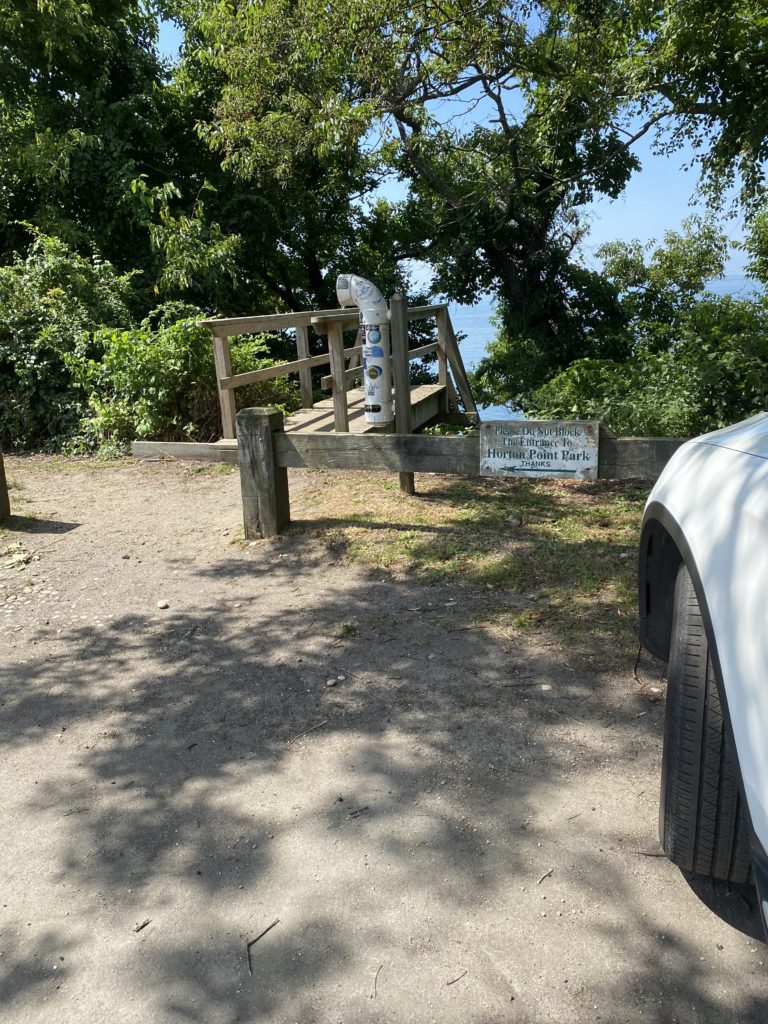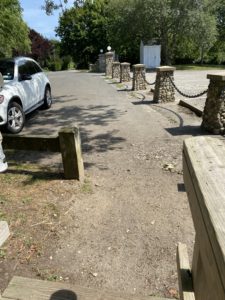Let me emphasize at the outset that the title of this blog refers to copy edits not copy editors. One of the tasks of a copy editor is to pick out inconsistencies and whatever doesn’t make sense. Copy editors are invaluable to the process of getting your manuscript turned into a readable hardcover or paperback or e-book.
In most cases, your editor will have already pointed out any major inconsistencies, but a copy editor goes through your manuscript one more time with an eagle eye for punctuation, grammar and spelling consistency ( is it cell phone or cellphone? Pick one to use throughout the book.) So, just when you think you’re done with edits and revisions, you get all the copy edits for review.

For example: This aerial view (above) of Robins Island on the North Fork of Long Island shows the body of water between the island’s sand bar and the mainland of the North Fork.
I called it a “gully” when describing the route taken by a character in the book. The copy editor said “gully” was the wrong word to use. “A gully is a trench for rainwater,” she said. I had to find another word. So, after studying maps and googling descriptions which referred to it as a navigational channel, I settled on “channel.”
This is also the point where your editor tells you: if there are any other changes you want /need to make, to please make them now. That’s because there’ll be one more “proof reading” stage, but if you make changes at that point it could alter page layouts and mess everything up.
Revisiting Locations
Admonitions like that always put me in a panic. It’s why I rushed out last weekend to revisit a couple of the locations in Fool Her Once. For example, I have a scene where my female protagonist, Jenna is assaulted on the grounds of a local country club’s golf course (below) after escaping from her assailant’s car at the dead of night.

Real life locations are always tricky. If you get something wrong, you’ll hear about it from the locals. I felt pretty safe with this one, however, even though I had not actually been there at the time of writing. Golf courses are usually vast, open grassy/sandy spaces that cannot be closed at night. Also, many of them are dissected by roads open to local/ public traffic.

Consulting my over-sized Hagstrom atlas (above), I saw that was the case with the local golf course I had in mind for the assault of my protagonist. Still, with the final edits in hand, I had to check it out. Just to be sure.

 Imagine my distress when I could not find the road marked as the one that ran right through the golf course. It wasn’t until I drove into a private driveway by mistake that a kindly resident informed me the road was no longer called Linden Avenue. It is now Moore’s Lane. Whew! Once I was driving through the golf course, I had no problem eyeing a couple of spots where my “assault” scene could happen (above and right.)
Imagine my distress when I could not find the road marked as the one that ran right through the golf course. It wasn’t until I drove into a private driveway by mistake that a kindly resident informed me the road was no longer called Linden Avenue. It is now Moore’s Lane. Whew! Once I was driving through the golf course, I had no problem eyeing a couple of spots where my “assault” scene could happen (above and right.)
116 Steps

One scene in Fool Her Once gave both my copy editor as well as my editor big problems. Coincidentally, it’s a scene I blogged about last year. It’s the scene where my female protagonist, Jenna goes to a scenic, local beach spot to run down and up 116 wooden steps as part of her exercise routine. She tackles the steps twice like a Stairmaster.
At the top she starts from her parking spot. When she returns from the beach at the bottom of the steps the second time around, she encounters the very intrusive and inquisitive deputy chief of the local police department.
 In my mind the scene was very simple. Jenna starts at the top of the 116 steps, runs down to the beach, then runs back up the steps, then down and up again. In the chapter, I wrote: “The lighthouse was about a ten-minute drive from the inn; close enough for Jenna to make the round trip and take the steps twice up and down in less than an hour.”
In my mind the scene was very simple. Jenna starts at the top of the 116 steps, runs down to the beach, then runs back up the steps, then down and up again. In the chapter, I wrote: “The lighthouse was about a ten-minute drive from the inn; close enough for Jenna to make the round trip and take the steps twice up and down in less than an hour.”
The chapter however starts with Jenna arriving back at the top (having already made her way down once) as her phone rings. She takes the call and is talking on her cell phone as she starts her way down the second time.
 She wraps up the call, and makes her way back up again to find Brad, the deputy police chief waiting for her at the top of the steps. She has a missing woman’s cell phone which she has to hand over to him, so she brushes past him to retrieve it from the glove compartment of her Jeep.
She wraps up the call, and makes her way back up again to find Brad, the deputy police chief waiting for her at the top of the steps. She has a missing woman’s cell phone which she has to hand over to him, so she brushes past him to retrieve it from the glove compartment of her Jeep.
Steps Logistics
 The comment from my copy editor (” she can’t do that because she’s at the top) suggested that she had not seen the mechanics of that scene the way I saw them. The words she’d read did not convey the same picture as I was seeing when I wrote the scene.
The comment from my copy editor (” she can’t do that because she’s at the top) suggested that she had not seen the mechanics of that scene the way I saw them. The words she’d read did not convey the same picture as I was seeing when I wrote the scene.
I pictured Jenna standing at the foot of the picture (left) as she arrives at the top of the steps; Chief Brad standing by the post, and Jenna having to get around him to get to her car. Obviously not what my copy editor pictured.
That sort of miscommunication is always the author’s fault. It is a failure to convey what the author has in his/her head to the reader. And, my copy editor was right. The way I wrote the scene suggested that Jenna was running up and down the steps when in fact she was running down and up the steps.
It’s easy to write a scene when it is very clearly in one’s mind. The fact is, however, that an editor, and definitely a reader usually does not have the same picture in his/her mind. As writers we have to re-create that picture in words so clearly there can be no mistake about what it looks like and how the scene is unfolding.
 My copy edits were sent to me for review just as I was finishing Stephen King’s new bestseller Billy Summers. King’s writing never leaves a reader in any doubt as to what is happening. Whether it is in a dingy rented apartment room where the protagonist is hurrying to get into his wig and fake belly outfit because there’s a knock at the door. Or, whether the setting is Iraq and the horrors of a tour of duty in Fallujah (relived by the protagonist in a book he is writing) King knows exactly how to make each scene vivid so that the reader sees what King is seeing as he writes. That’s what sets Stephen King apart from the rest of us and makes him a master storyteller.
My copy edits were sent to me for review just as I was finishing Stephen King’s new bestseller Billy Summers. King’s writing never leaves a reader in any doubt as to what is happening. Whether it is in a dingy rented apartment room where the protagonist is hurrying to get into his wig and fake belly outfit because there’s a knock at the door. Or, whether the setting is Iraq and the horrors of a tour of duty in Fallujah (relived by the protagonist in a book he is writing) King knows exactly how to make each scene vivid so that the reader sees what King is seeing as he writes. That’s what sets Stephen King apart from the rest of us and makes him a master storyteller.
We others have to struggle, and write and re-write– and re-write again. I’ve re-written that scene on the Horton steps a couple of times. I re-wrote it again last week. Hopefully, it is much clearer now. If it’s not, then please bookmark this blog and return to it to look at the photos when you’re reading Fool Her Once. LOL!
The Dreaded Comma
Lest anyone thinks these were the only three edits from CamCat’s copy editor, think again. The copy edits for my review numbered more than 4,000. I would estimate that about 3,900 of them zeroed in on punctuation, and 3,890 of those corrected my comma usage. Honestly, I’ve tried my best. I’ve studied serial commas and Oxford commas; I’ve downloaded cheatsheets on commas; I’ve read all the rules. Honest.
I just don’t get it. But then I was taught commas in the U.K. by reading Charles Dickens novels where a sentence can run on for 30 lines with commas encircling adjectival and adverbial clauses, and everything in between.
That’s my excuse for the abysmal job I’ve made of punctuation in Fool Her Once. I have nothing but gratitude for CamCat Books’ copy editor Ellen Leach. I’m going to try to do better next time. Promise.
If you found this blog useful, informative and/or useful please click on the Like button below.
I like the “I’m going to try to do better next time”. – Next time… 🙂
I really am though. I’m going to really try !
You and I share the same difficulties with commas then, Joanna. I’ll admit I have no clue how to use them properly lol
When I have more time, I think I’m going to trace the history of the comma cos I’m pretty darn sure that serial and Oxford commas got introduced on this side of the Atlantic. On what used to be my side of the Atlantic, I think we mostly understood what to do with commas.